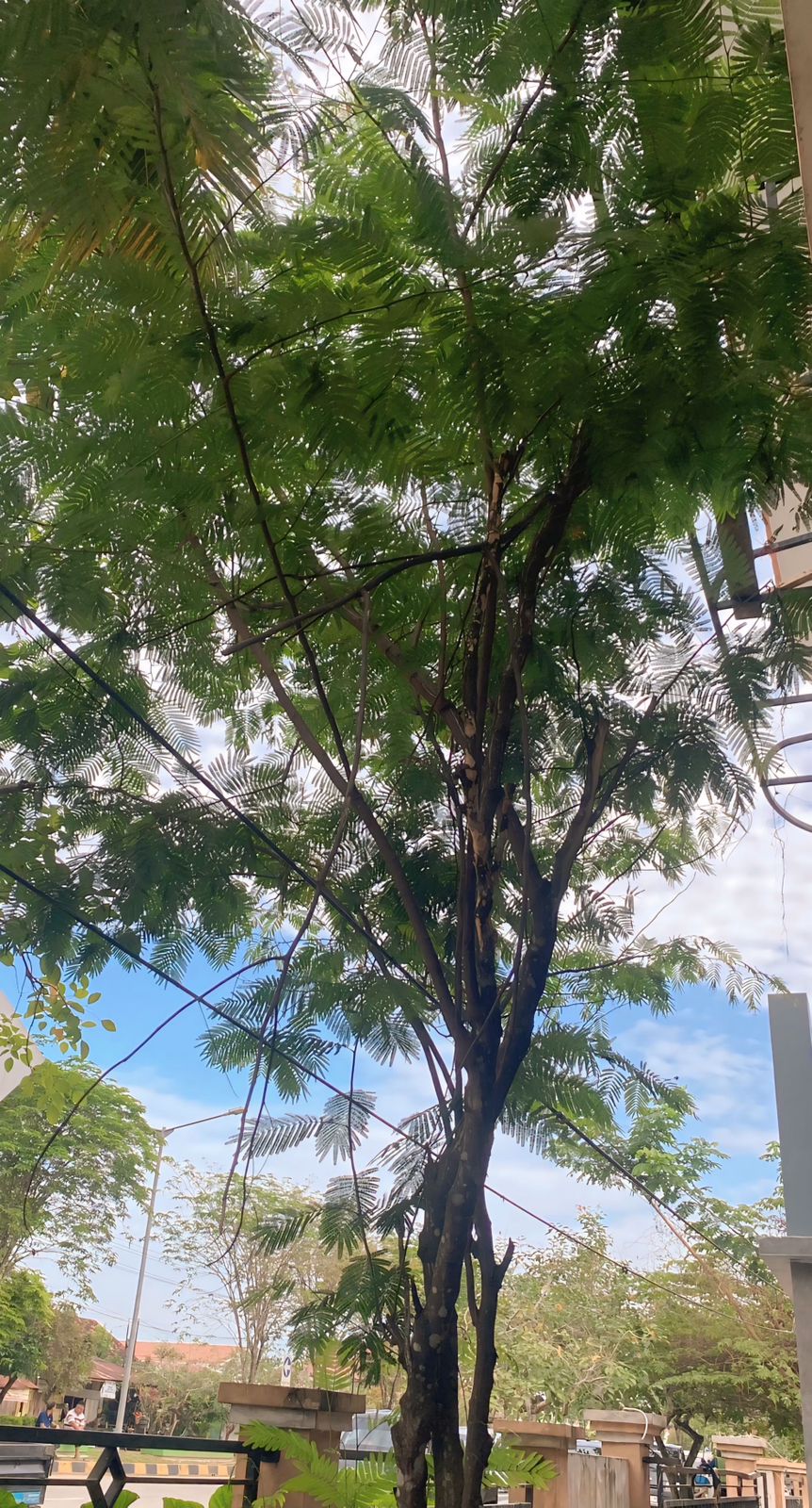Albizia chinensis (Osbeck) Merr., Amer.J.Bot. 3:575 (1826)
Famili : Fabaceae
Species : Albizia chinensis (Osbeck) Merr., Amer.J.Bot. 3:575 (1826)
Local Name :
- Cambodia : cool.
- China: Yingshu.
- English: Silk tree, Chinese albizia.
- Indonesian: jeungjing (Sundanese), sengon (Javanese), keura (East Sumba).
- Laos: kha:ng (Xieng Khouang), kha:ng hu: (Vientiane).
- Thailand: kang Luang, san-kham (North), khang hung (Khon Kaen).
- Vietnamese: s[oos]ng r[aws]n t[af]u, cham (Ha Tuy¨ºn), chu m[ef] (Quang Ninh).
Description : Tree to 30(-43) m high, d.b.h. to 70(-140) cm. Tree with umbellate crown. Bark smooth, grey, living bark red; sapwood white; heartwood brown. Branchlets slightly angular in the distal parts, terete, puberulous to tomentose, glabrescent. Stipules auriculate, c. 1-1.5 by 0.6-3 cm, usually visible in young branches and inflorescence, caducous. Leaves: rachis 10-25 cm, puberulous to tomentose, a gland c. 1.5-2 cm above the base, elliptic(-suburceolate), raised, c. 2-3 by 1-1.5 mm; pinnae 4-14 pairs, 4-14 cm, puberulous to tomentose, glabrescent, with glands at the junctions of the 1 or 2 distal pair(s) of leaflets, narrowly elliptic to slit-like, concave, c. 1 mm, or glands absent; leaflets (10-)20-31 pairs per pinna, opposite, sessile, thinly chartaceous; asymmetrically subulate, 6.5-10 by 1.5-3 mm, base truncate, apex sharply acute, at both sides sparsely sericeous or glabrous; main vein and margins sericeous to tomentose, main vein forming the front margin. Inflorescences consisting of pedunculate glomerules aggregated into terminal yellowish-green tomentose to hirsute panicles; peduncles up to 5 in clusters, often with auriculate stipules at the base, 1-3 cm long, bearing glomerules of 10-20 sessile or subsessile flowers. Flowers dimorphic, bisexual, pentamerous. Calyx tubular to narrowly campanulate, tomentose to hirsute, (2-)2.5-5 mm, teeth triangular, acute, 0.3 mm. Corolla funnel-shaped, puberulous to hirsute especially on the lobes, 6-10 mm, lobes triangular-ovate, acute, 2-2.5 mm. Stamens white at base, yellowish green at top, c. 20 mm, tube as long as to slightly longer than the corolla tube. Ovary glabrous, c. 3 mm, sessile. Pod yellowish-brownish, flat, straight, often with slightly sinuate margins, indehiscent or irregularly breaking up, 9-15 by 1.8-2 cm, valves rigidly chartaceous, glabrous, veins inconspicuous. Seeds elliptic, flattened, c. 7 by 4-5 by 0.5-1 mm; areole at the micropylar end, subcircular, c. 1 mm in diameter, open towards the hilum, pleurogram not parallel to the margin of the seed. [from Flora Malesiana]
Ecology : Native of mixed deciduous forest and rain forest in humid tropical and subtropical monsoon climates with annual rainfall varying from 1000-5000 mm. It occurs in secondary forest, along river banks, and in savannas up to 1800 m altitude. Light frost is tolerated. It is adapted to poor soils, high pH, is fairly salt-tolerant and thrives on lateritic alluvial soil and sandy mining areas. In growth trials on poorly drained, infertile, gleyed, podzolic soils it had a survival rate of nearly 100%.

